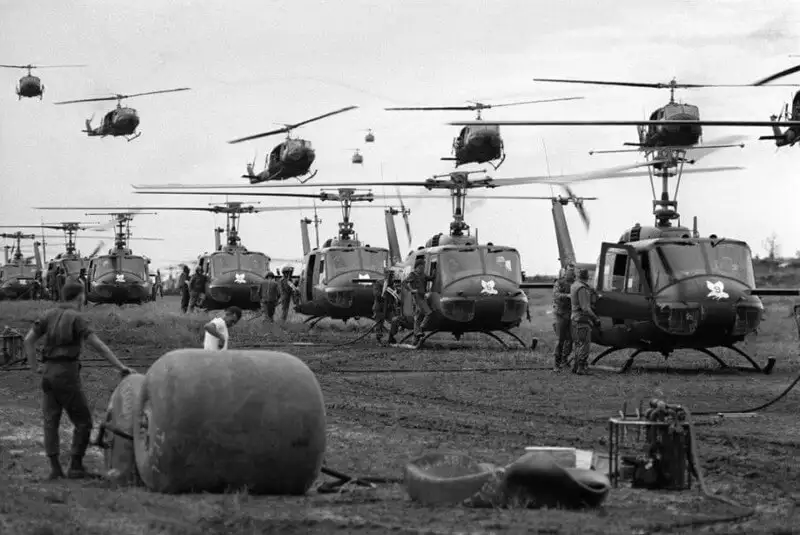The Vietnam War was a protracted, costly, and deeply divisive conflict between the communist government of North Vietnam and South Vietnam, primarily supported by the United States. The war intensified within the Cold War context between the United States and the Soviet Union. Over 3 million people perished in the conflict, including more than 58,000 American soldiers, with over half of the victims being Vietnamese civilians.
In this article, Pywar will explore with readers why the Vietnam War occurred, when it began, and the key battles that defined the conflict.
Origins of the Vietnam War
Vietnam, a Southeast Asian nation on the eastern edge of the Indochinese Peninsula, had been under French colonial rule since the 19th century.
During World War II, Japanese forces invaded Vietnam. To resist both the Japanese and French colonial authorities, leader Ho Chi Minh, inspired by Chinese and Soviet communism, established the Viet Minh, also known as the League for the Independence of Vietnam.
Following Japan’s defeat in World War II in 1945, Japanese forces withdrew from Vietnam, leaving the French-educated Emperor Bao Dai in control. Seizing the opportunity to take power, Ho Chi Minh’s Viet Minh forces quickly rose up, capturing the northern city of Hanoi and declaring the Democratic Republic of Vietnam (DRV) with Ho Chi Minh as president.
Seeking to regain control of the region, France backed Emperor Bao Dai and established the State of Vietnam in July 1949, with its capital in Saigon.
Both sides desired a unified Vietnam, but their visions diverged. Ho Chi Minh and his supporters aimed to build a communist state, while Bao Dai and many others sought a Vietnam with strong economic and cultural ties to the West.
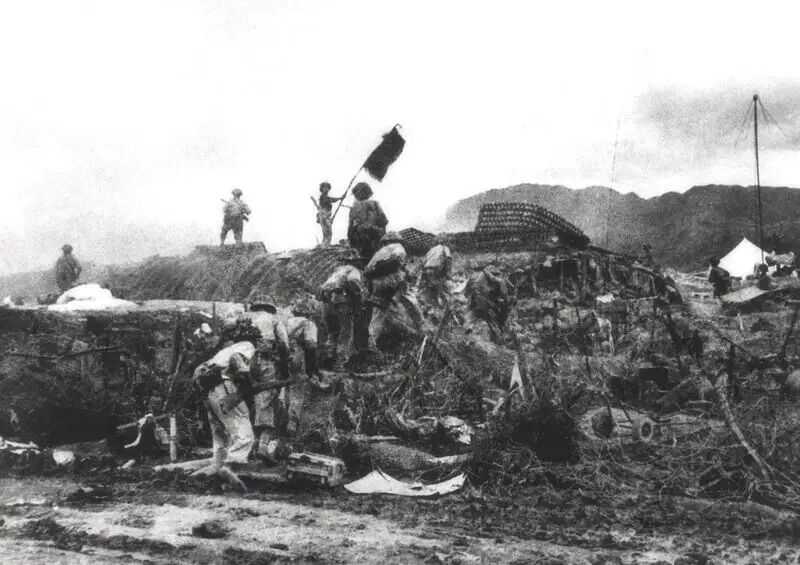
- Viet Minh forces advance during the Dien Bien Phu campaign in 1954. The Americans jump into Vietnam. (Source: Collected)
Did You Know?
According to a survey by the U.S. Veterans Administration, approximately 500,000 of the 3 million soldiers who served in Vietnam suffered from post-traumatic stress disorder (PTSD). Additionally, rates of divorce, suicide, alcoholism, and drug addiction were significantly higher among these veterans compared to the general population.
When Did the Vietnam War Begin?
The Vietnam War and significant U.S. involvement began in 1954, though tensions in the region had simmered for decades prior.
After Ho Chi Minh’s communist forces seized control of the North, armed conflict between northern and southern forces persisted until the Viet Minh’s decisive victory at the Battle of Dien Bien Phu in May 1954. This defeat ended nearly a century of French colonial rule in Indochina.
The Geneva Accords, signed in July 1954, divided Vietnam along the 17th parallel, with Ho Chi Minh leading the North and Bao Dai governing the South. The agreement also called for nationwide elections in 1956 to unify the country.
However, in 1955, staunch anti-communist politician Ngo Dinh Diem overthrew Emperor Bao Dai to become President of the Republic of Vietnam (RVN), commonly known as South Vietnam.

- The conflict officially began in 1954, following the Geneva Accords, when Vietnam was split into North and South. (Source: Collected)
The Viet Cong and the Resistance
As the Cold War escalated globally, the United States hardened its stance toward Soviet allies. By 1955, President Dwight D. Eisenhower pledged strong support for Ngo Dinh Diem and South Vietnam.
With training and equipment from the U.S. military and CIA, Diem’s security forces cracked down on Viet Minh supporters in the South, whom he derisively labeled “Viet Cong” (Vietnamese Communists). Approximately 100,000 people were arrested, many of whom were brutally tortured and executed.
By 1957, the Viet Cong and other opponents of Diem’s repressive regime began retaliating with attacks on government officials and other targets. By 1959, clashes between the Viet Cong and the South Vietnamese army had erupted.
In December 1960, Diem’s southern opponents, including both communists and non-communists, formed the National Liberation Front (NLF) to organize resistance. Though the NLF claimed independence and comprised mostly non-communists, many in Washington viewed it as a puppet of Hanoi.
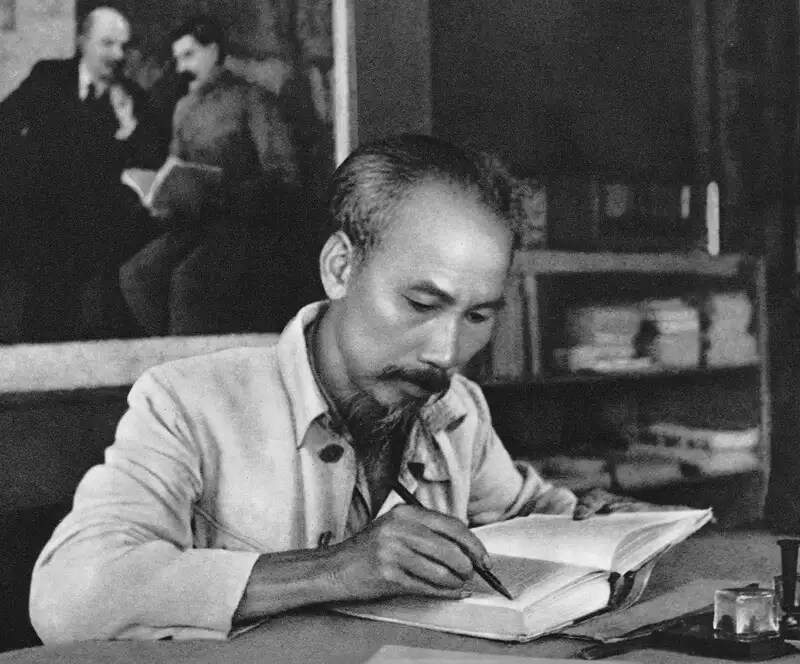
- Chairman Ho Chi Minh established the National Liberation Front (NLF) to organize resistance. (Source: Collected) (Source: Collected)
The Domino Theory
In 1961, a team of experts sent by President John F. Kennedy to South Vietnam recommended increased military, economic, and technical aid to help Ngo Dinh Diem counter the Viet Cong threat.
Based on the Domino Theory—the belief that if one Southeast Asian nation fell to communism, others would follow—Kennedy bolstered aid to South Vietnam. However, he refrained from committing to large-scale military intervention.
By 1962, the U.S. military presence in South Vietnam had grown to about 9,000 troops, up from fewer than 800 in the 1950s.
The Gulf of Tonkin Incident and the Turning Point of the Vietnam War
In November 1963, a coup by South Vietnamese generals overthrew and killed Ngo Dinh Diem and his brother, Ngo Dinh Nhu. Three weeks later, President John F. Kennedy was assassinated in Dallas, Texas.
Political instability in South Vietnam prompted Kennedy’s successor, President Lyndon B. Johnson, and Secretary of Defense Robert McNamara to escalate military and economic support for the South Vietnamese government.
In August 1964, after North Vietnamese torpedo boats attacked two U.S. destroyers in the Gulf of Tonkin, Johnson ordered retaliatory airstrikes on military targets in North Vietnam. The U.S. Congress then passed the Gulf of Tonkin Resolution, granting Johnson broad war-making powers. In early 1965, the U.S. launched Operation Rolling Thunder, a large-scale bombing campaign.
The bombing was not limited to Vietnam. From 1964 to 1973, the U.S. secretly dropped 2 million tons of bombs on Laos in a CIA-led “Secret War” to disrupt the Ho Chi Minh Trail and counter the communist Pathet Lao forces, making Laos the most heavily bombed country per capita in history.
In March 1965, Johnson decided to deploy U.S. combat troops to Vietnam with strong public support. By June, 82,000 American troops were in Vietnam, and military leaders requested an additional 175,000 to bolster the faltering South Vietnamese army. Despite concerns from some advisors and a growing anti-war movement, Johnson sent 100,000 more troops by the end of 1965 and another 100,000 in 1966.
In addition to the U.S., countries like South Korea, Thailand, Australia, and New Zealand also sent troops to South Vietnam, though on a much smaller scale.
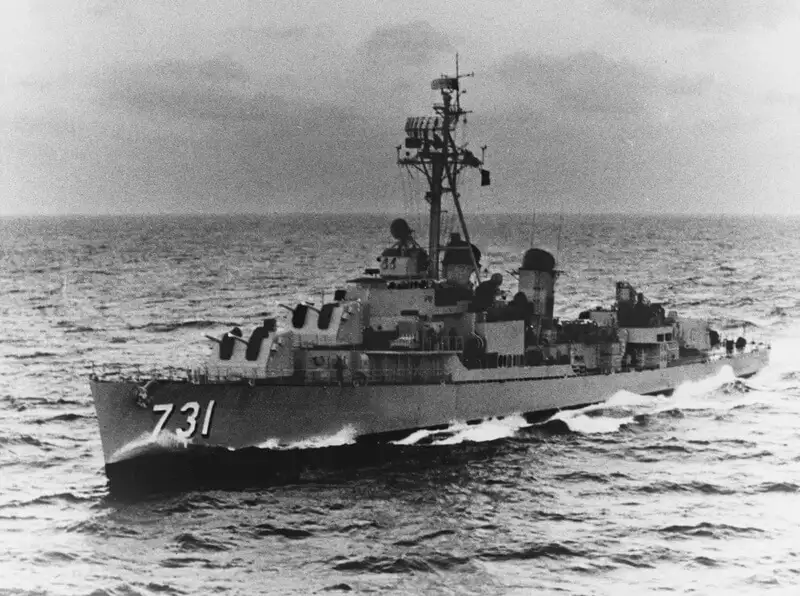
- In August 1964, after North Vietnamese torpedo boats attacked two U.S. destroyers in the Gulf of Tonkin. (Source: Collected) (Source: Collected)
General William Westmoreland and the Attrition Strategy
While air attacks targeted North Vietnam, the ground war in South Vietnam was led by General William Westmoreland, in coordination with the government of General Nguyen Van Thieu in Saigon.
Westmoreland pursued an attrition strategy, focusing on killing as many enemy soldiers as possible rather than securing territory. By 1966, large areas of South Vietnam were designated “free-fire zones,” where all innocent civilians were assumed to have evacuated, leaving only enemies. These zones were heavily bombed by B-52s or shelled, rendering them uninhabitable. Refugees flooded camps near Saigon and other major cities.
Despite rising enemy body counts (often exaggerated by U.S. and South Vietnamese authorities), North Vietnamese and Viet Cong forces persisted. With resources and personnel funneled through the Ho Chi Minh Trail via Cambodia and Laos, they easily reclaimed lost territory. Backed by China and the Soviet Union, North Vietnam also strengthened its air defenses, further complicating U.S. military strategies.
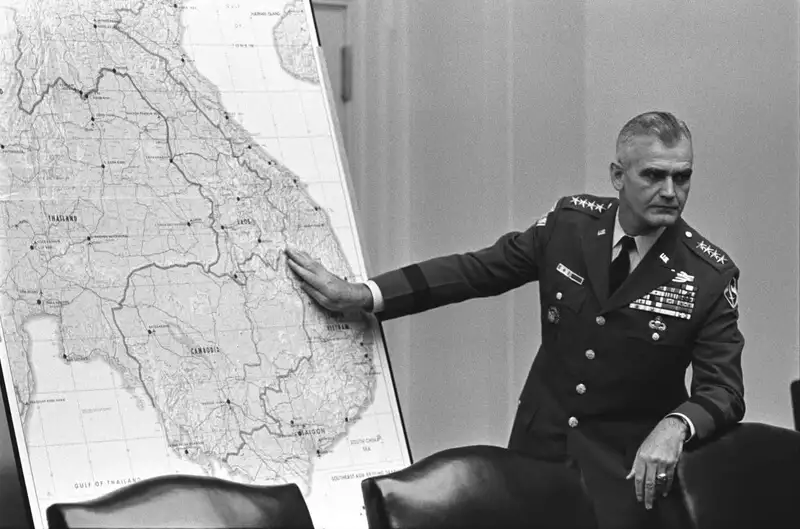
- U.S. General Westmoreland pursued an attrition strategy to counter Vietnam. (Source: Collected) (Source: Collected)
The Anti-War Movement During the Vietnam War
By November 1967, the U.S. troop count in Vietnam neared 500,000, with 15,058 killed and 109,527 wounded. As the war dragged on, growing numbers of soldiers lost faith in the government’s rationale for maintaining forces in Vietnam and its optimistic claims of progress.
The war’s final years saw physical and psychological breakdowns among U.S. troops, including drug abuse, PTSD, mutinies, and even attacks on commanding officers. From July 1966 to December 1973, over 503,000 U.S. soldiers deserted. A robust anti-war movement within the military led to violent protests, killings, and mass arrests, both in Vietnam and the U.S.
At home, televised images of the war’s horrors turned public opinion against the conflict. In October 1967, about 35,000 protesters gathered outside the Pentagon in a major demonstration. Anti-war advocates argued that civilians, not enemy soldiers, bore the brunt of the war and that the U.S. was propping up a corrupt dictatorship in Saigon.
The Tet Offensive: A Pivotal Turning Point in the Vietnam War
By late 1967, Hanoi’s communist leadership grew impatient and sought to deliver a decisive blow to force the resource-superior U.S. to abandon hope of victory.
On January 31, 1968, approximately 70,000 North Vietnamese and Viet Cong troops, led by General Vo Nguyen Giap, launched the Tet Offensive—a series of coordinated attacks on over 100 cities and towns across South Vietnam.
Though caught off guard, U.S. and South Vietnamese forces quickly counterattacked, preventing the communists from holding any target for more than a day or two.
However, reports of the Tet Offensive stunned the American public, especially after news emerged that General Westmoreland requested 200,000 additional troops despite prior claims that victory was imminent. Facing public pressure and declining approval in an election year, President Lyndon B. Johnson announced a halt to most bombing of North Vietnam (though airstrikes continued in the South) and pledged to dedicate the rest of his term to seeking peace rather than running for re-election.
This announcement, delivered in a March 1968 speech, was met with a positive response from Hanoi. Peace talks between the U.S. and North Vietnam began in Paris in May that year. However, despite later involvement from the South Vietnamese government and the National Liberation Front (NLF), negotiations quickly stalled. After a tense and violent 1968 election season, Republican candidate Richard M. Nixon won and became U.S. President.
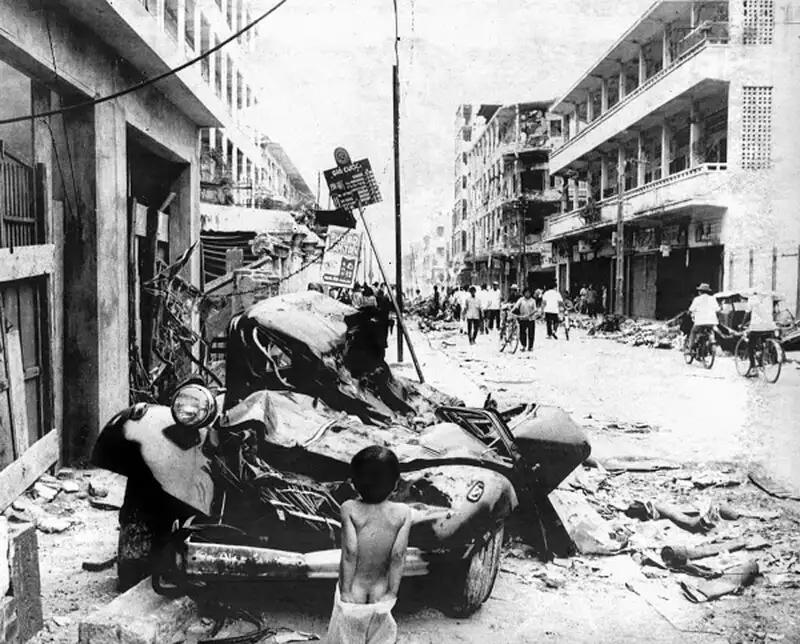
- General Vo Nguyen Giap led the Tet Offensive in 1968. (Source: Collected) (Source: Collected)
Nixon’s “Vietnamization” Policy
To appease the growing anti-war movement, President Richard Nixon appealed to a “silent majority” of Americans he believed still supported the war effort. To reduce American casualties, Nixon introduced the Vietnamization program, which involved gradually withdrawing U.S. troops, increasing airstrikes and artillery, and equipping and training the South Vietnamese army to take over ground combat.
Alongside Vietnamization, Nixon pursued public peace talks in Paris while conducting secret high-level negotiations led by Secretary of State Henry Kissinger starting in spring 1968.
However, North Vietnam steadfastly demanded the complete, unconditional withdrawal of U.S. forces and the removal of the U.S.-backed General Nguyen Van Thieu’s government. These demands stalled peace negotiations.
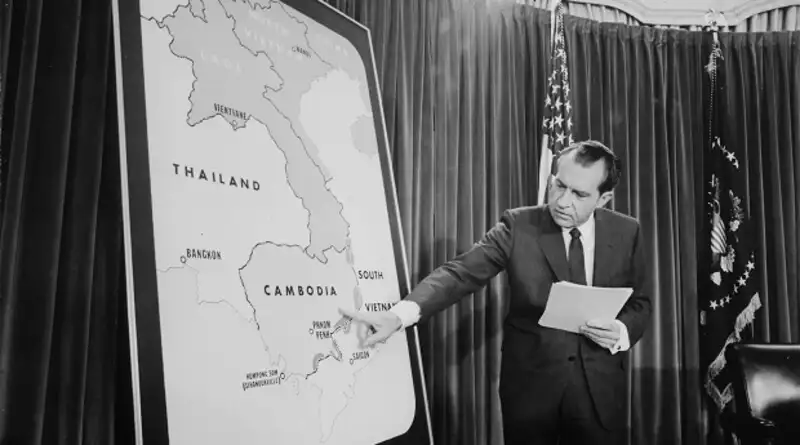
- U.S. President Nixon with his Vietnamization strategy. (Source: Collected) (Source: Collected)
The My Lai Massacre
The later years of the Vietnam War witnessed numerous tragedies, including the horrifying revelation of the My Lai Massacre in March 1968, where over 400 unarmed civilians were brutally slaughtered by U.S. soldiers.
Following this event, anti-war protests intensified. In 1968 and 1969, hundreds of marches and gatherings took place across the U.S. The peak came on November 15, 1969, when over 250,000 people joined the largest anti-war demonstration in U.S. history in Washington, D.C., demanding troop withdrawal from Vietnam.
The anti-war movement, particularly strong on college campuses, deeply divided American society. For some young people, the war symbolized unchecked power they despised. Conversely, many Americans viewed opposition to the government as treasonous.
As U.S. troops began withdrawing from Vietnam, those remaining grew increasingly disillusioned, exacerbating issues of morale and leadership. Tens of thousands of soldiers received dishonorable discharges for desertion, and approximately 500,000 American men from 1965 to 1973 “dodged the draft,” many fleeing to Canada to avoid conscription.
In 1972, Nixon ended the draft and established an all-volunteer military the following year, closing a contentious chapter in U.S. military history.
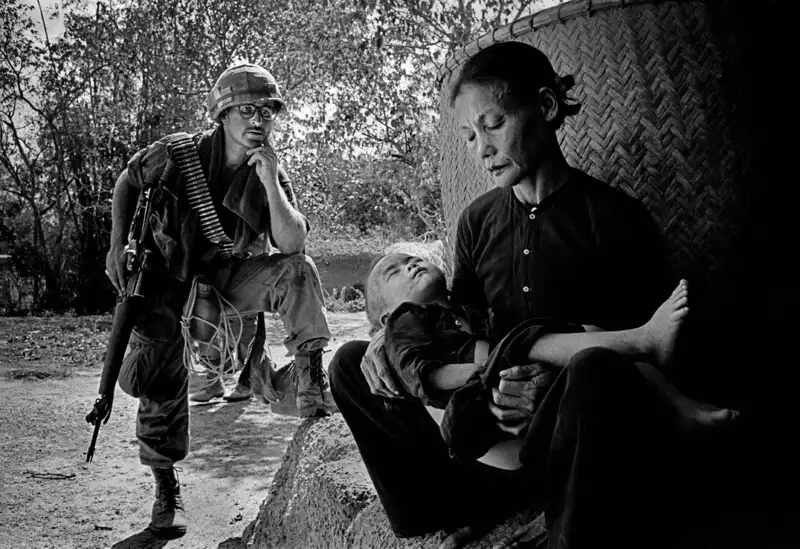
- The My Lai Massacre was one of several atrocities committed by U.S. forces. (Source: Collected) (Source: Collected)
Anti-War Protests at Kent State University
In 1970, a joint U.S.-South Vietnamese campaign entered Cambodia to destroy North Vietnamese supply bases. Later, South Vietnam independently invaded Laos but was repelled by North Vietnamese forces.
These invasions, which violated international law, sparked a new wave of protests at universities across the U.S. On May 4, 1970, during a demonstration at Kent State University in Ohio, the National Guard opened fire, killing four students. Ten days later, at Jackson State University in Mississippi, police killed two students during another protest.
By late June 1972, after a failed offensive into South Vietnam, Hanoi signaled a willingness to compromise. Kissinger and North Vietnamese representatives drafted a peace agreement by early fall, but the Saigon government rejected it. In December 1972, Nixon ordered massive airstrikes on Hanoi and Haiphong, dubbed the “Christmas Bombings,” drawing sharp international criticism.
Conclusion
The Vietnam War was a prolonged conflict that inflicted immense losses and left deep scars in history. From the North-South divide and military strategies like the Tet Offensive and Vietnamization to tragedies like My Lai, the war reshaped perceptions of human rights and peace, serving as a reminder of the value of global unity. Be sure to check out other articles in our Vietnam War history category for more battles and fascinating historical insights you may not yet know!
Translated by: Le Tuan
Source: history.com – Vietnam War


